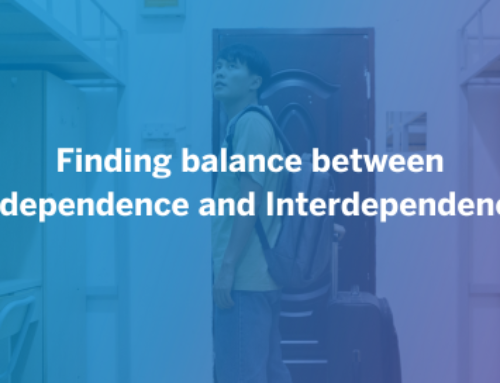
Addiction is a Disease/Disorder
It is vital to understand that addiction is a disorder and a disease. The identification of addiction as a medical condition by well-respected medical institutions has greatly aided the treatment of addiction; however, this is extremely hard to acknowledge when feeling concerned for a loved one. Dealing with at-risk loved ones engaging in self-destructive and counterintuitive behaviors leaves families, teachers, and peers deeply confused and lost. Why would this person do such a thing? Furthermore, how can I intervene to stop my loved one in their tracks? Shouldn’t a heavy punishment, an intervention, or an inspirational speech/reminder do something for the addicted individual? The effort to help others face and escape their addictions can become so warped and futile that there exists well-established 12-step fellowships directed at helping the families of addicts let go of the need to fix and save their loved one.
From the moment that addiction took hold in my life, there was little that anybody could do to stop me. Severe health consequences, intense feelings of guilt, and familial disappointment, all of these factors did nothing to prevent me from continuing to get high. My parents did everything they possibly could. The insanity and cognitive distortion associated with developing an addiction are enough to guide the sick individual past any obstacle between them and their next high. The DSM-V criteria for addiction include factors that indicate dissonance and delusion: (e.g., “The substance use is continued despite knowledge of having a persistent physical or psychological problem that is likely to have been caused or exacerbated by the substance”).
I was willing to neglect my sick and ailing father, to risk my life behind the wheel of a vehicle, and to go on smoking when I was undergoing intensive care for severely impaired lungs. The list can go on ad-infinitum. My parents drug-tested me, my siblings held interventions, they revoked privileges, it did not matter. Moral character, philosophical convocation, and motivation are not lacking in the life of an individual with addiction. However, all of these considerations are consistently and willfully cast aside for the treatment of the discomfort felt when sober. How can this be described in any way other than insanity? While there may be an illusion of choice, addiction robs the individual of his freedom to make their own decisions.
The prevention effort at Living Skills in the Schools has grown out of our firm understanding of the seemingly inevitable reality that sets in for so many individuals once they start using drugs. The blend of drugs and the developing brain will outmatch any positive parenting, community support, and strong values in the life of the child. Diseases do not care about the character of the individual they impact. Our prevention speakers come from a vast variety of contexts, the common ground being that we began using drugs at a young age and thus initiated a vicious cycle that couldn’t be stopped until we were institutionalized.
The understanding of addiction as a disease leads to many important comprehensions. It forces us to confront the fact that no matter what you have instilled in your student or child, it can be rapidly warped and ignored if they become involved with drugs. Furthermore, it warns parents against hesitation in confronting the reality of their child’s situation. If you are keenly aware of your child’s inability to choose not to get high, then there is no waiting, they need clinical help immediately.
Addiction begins immediately.
The very early stages of addiction are among the most important aspects for students to hear in the prevention message. Furthermore, a strong comprehension of the characteristics associated with the initial stages of addiction can help educators, mental health workers, and families with early detection and prevention. While the hold of addiction was eventually extreme enough to withstand most outside intervention, there was certainly a time when I could’ve been helped – before I crossed that imaginary line and lost my ability to choose.
The early stages of substance abuse often already meet two major criteria of substance abuse disorders. The sacrificing of important activities and the persistence of use despite ongoing interpersonal problems was an immediate factor in the initiation of smoking and drinking among my peers. Before drug use occurred daily, before major mental health problems and hospital visits, there was the dissonance necessary to use when we all noticed problems. We smoked relatively frequently, and all of us would occasionally get the sense that we were becoming more forgetful. Our thinking seemed a little foggy at times. This came with a deep sense of dread, having adopted a lifestyle that is beginning to fill you with doubt. Some of us had severe mental health issues that we vaguely sensed were getting worse.
The DSM-V addresses the escalation of use over time. This was an immediate risk when drugs entered our lives. When a group of impressionable teens begins engaging in behavior that they previously knew they would never do (we all had this notion at some point in time) and then maintains that behavior in the face of genuine risk, they are habituating themselves to the practice of self-deception and risk-taking. When a group of students gasp at the decisions I have made down the line, I challenge them to consider if they are currently engaging in behaviors that they might have once gasped at in the same way. If you are engaging in behavior you once knew was unacceptable, how can you be certain that you will not escalate again when the chance arises, with sufficient temptation and peer pressure?
Students who begin using drugs often display addictive characteristics from the get-go. Someone in the friend group is likely stealing money from their parents when their money gets short, and they had planned to get high that weekend. Someone in the group is going to therapy and lying about their substance abuse, which has rapidly become more important than their own health. Undoubtedly they are lying to their families and teachers on a weekly basis; undoubtedly, they will persist in their use despite any apprehensions in the group, which will be neatly swept under the rug. Vehicles that belong to their family members will be driven while under the influence of marijuana. The students will gradually begin approaching their hangouts with an increased level of intensity and consistency.
We need to redefine addiction.
We run a great risk if these behaviors go without notice and acknowledgment, if they are seen as teens just being teens. Many students will have progressed beyond the point of return of intervention before their parents are even aware of a problem. This played out quite precisely in my high school. I have dozens of friends who are remarkably maladjusted to life well into their 20s, entirely unaware that the word addiction has anything to do with them. A proper definition of addiction and its initial stages is required for us to target students that can be genuinely helped. While I can never be sure what might’ve happened in different circumstances, I feel confident that if someone had characterized this process for me before or at the beginning of my substance abuse, it would’ve been incredibly convincing and powerful to watch all of my friends change in this way before my eyes.
It should be noted that refining and clarifying our image of addiction allows us to reassess drug use in general. How should we, for example, consider an individual who isn’t anywhere near the realm of rehab but would do a double-take when faced with a job opportunity that would require drug testing and complete sobriety? Is there a better word than ‘drug addict’ for an individual who constantly smokes weed despite ample research that doing so will cause long-term cognitive deficits, including a shrunken hippocampus and significant alterations to the prefrontal cortex? When adult reasoning is applied to most issues but neatly evaded when addressing one’s smoking habit, it is safe to use the word addict. If two months off of weed is new to you, you just might have an addiction to drugs.
This is the conclusion that emerged after students consistently asked how my high school friends were doing after almost every single presentation. In search of an answer, I soon found that the best I could conjure was that they were doing curiously worse than all of my friends from rehab, who now remain completely sober. They are slowly moving backwards. Their experiences of fun and freedom are lessened without their ability to escape. They have much to hide. The honest marker of addiction is present long before the later stages of rehab, hospitalization, and daily use.
Conclusion
By emphasizing prevention and increasing awareness about addiction as a disease, we can actively contribute to better understanding and addressing the challenges faced by individuals struggling with addiction. We must collectively understand addiction as a disease that does not discriminate based on risk factors. Addiction overrides personal choice and willpower. Additionally, understanding the depth of addiction’s impact requires an understanding that initiation of drug use usually already contains many characteristics of substance abuse disorders. There is a great need for early detection and intervention. Furthermore, refining our understanding of addiction allows us to target and help those who may not fit traditional stereotypes of a “drug addict.”
By: Danny Z
Danny is a in house LSIS Prevention Speaker.








Leave A Comment